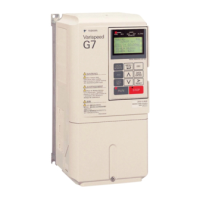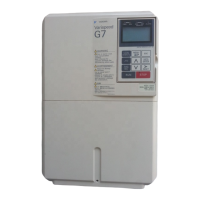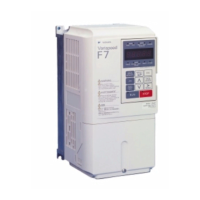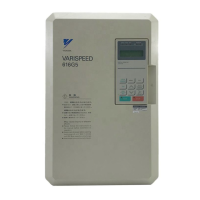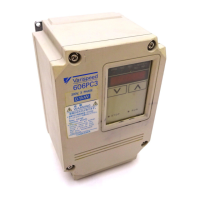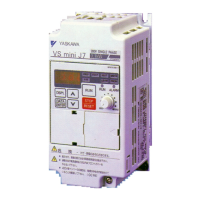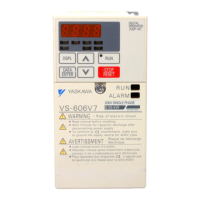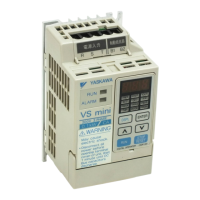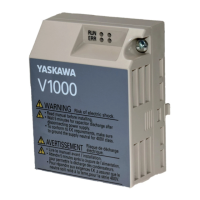6
-38
Fig 6.33 Slip Compensation Limit
Selecting Slip Compensation Function During Regeneration
Set whether to enable or disable the slip compensation function during regeneration.
If the slip compensation function operates during regeneration, you might have to use the braking option
(braking resistor, Braking Resistor Unit, and Braking Unit) to momentarily increase the regenerative amount.
Selecting Output Voltage Limit Operation
If output voltage saturation occurs while the output voltage limit operation is disabled, the output current will
not change, but torque control accuracy will be lost. If torque control accuracy is required, change the settings
to enable the output voltage limit operation.
If the output voltage limit operation is enabled, motor magnetic flux current is controlled automatically, and
torque control accuracy is maintained to limit the output voltage references. Consequently, the output current
will increase by approximately 10% maximum (with rated load) compared with when the output voltage limit
operation is disabled, so check the Inverter current margin.
Setting Precautions
• If using the device at medium to low speed only, if the power supply voltage is 10% or more higher than
the motor rated voltage, or if the torque control accuracy at high speeds is insufficient, it is not necessary to
change the output voltage limit operation.
• If the power supply voltage is too low compared with the motor rated voltage, torque control accuracy may
be lost even if the output voltage limit operation is enabled.
Compensating for Insufficient Torque at Startup and Low-speed Opera-
tion (Torque Compensation)
The torque compensation function detects that the motor load has increased, and increases the output torque.
V/f control calculates and adjusts the motor primary loss voltage according to the output voltage (V), and
compensates for insufficient torque at startup and during low-speed operation. Calculate the compensation
voltage as follows: Motor primary voltage loss × constant C4-01.
Vector control separates the motor excitation current and the torque current by calculating the motor primary
current, and controlling each of the two separately.
Calculate the torque current as follows: Calculated torque reference × C4-01
Slip compensation limit
Output frequency
E1-06: Base frequency
E1-04: Maximum output frequency
TOE-S616-60.1.book 38 ページ 2017年8月4日 金曜日 午後3時41分
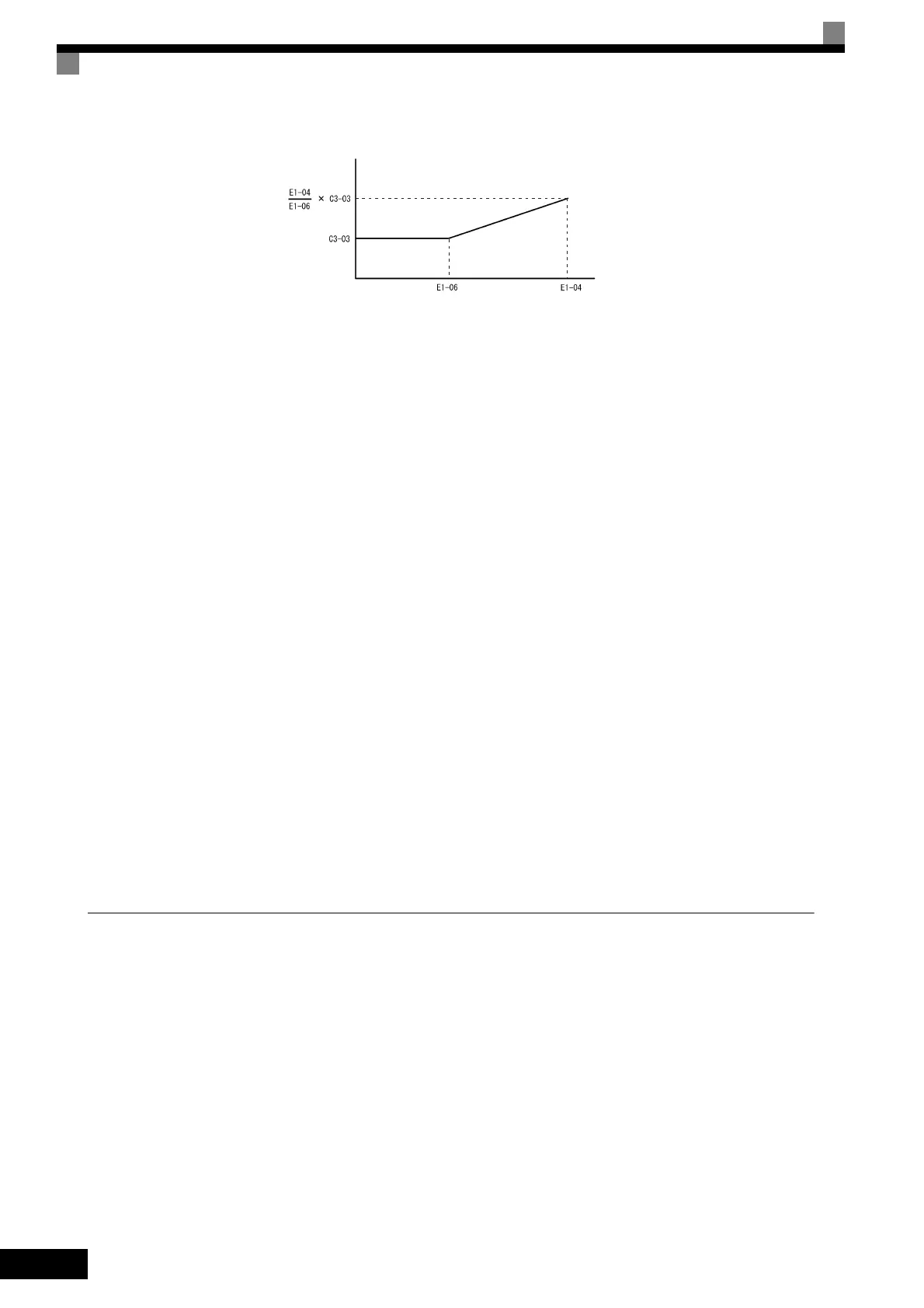